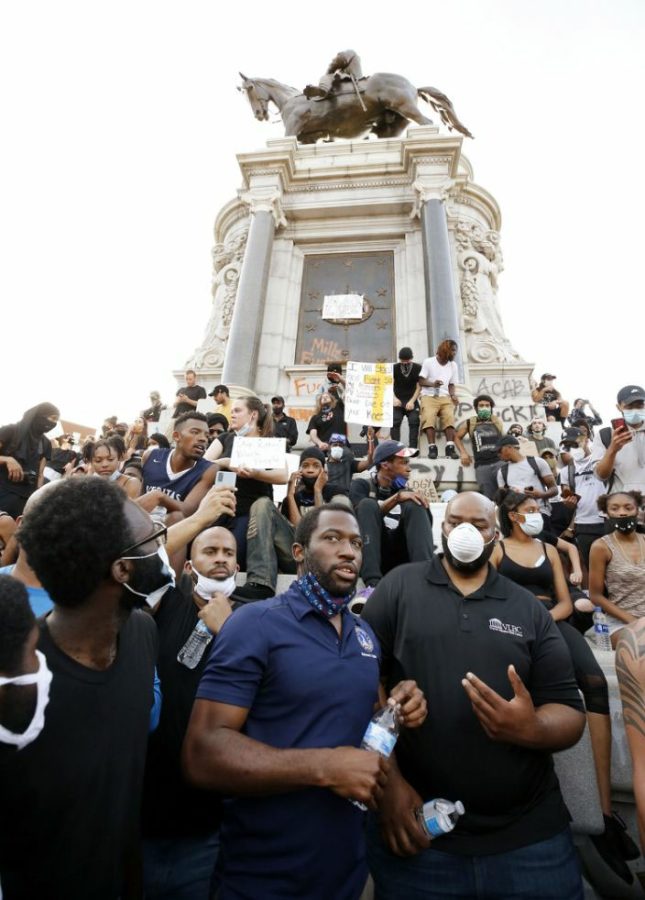Richmond, va.
At noon on June 2, more than a thousand people thronged the plaza outside city hall to hold the young mayor to account.
The night before, protesters had gathered in front of an equestrian statue of Confederate General Robert E. Lee on the city’s famous Monument Avenue, demanding that it come down. George Floyd had been killed in Minneapolis a week earlier, and the effects were rippling across the country. Here, in the former capital of the Confederacy, the protesters targeted the nation’s most prominent memorial to the military commander who fought to protect slavery. Police officers had responded with tear gas, claiming the demonstrators were violent, and now the people gathered in front of city hall blamed the mayor, Levar Marcus Stoney, for an assault they saw as unprovoked. “Stoney, Stoney, Stoney,” chanted the crowd in a rhythmic taunt.
When the mayor stepped out of the government building, he was met with boos and cries of “Resign!” and “Where were you last night?” A protestor handed him a red-and-white bullhorn so he could speak over the crowd, but Stoney still had trouble making his apology heard. “It was wrong, and it was inexcusable,” he said, promising that the perpetrators of the tear gas attack would be held accountable. After listening for an hour to the citizens’ complaints and frustrations, in the hope of easing the tension, he asked to join them that evening in their planned two-mile trek from the state capitol building to the site of the memorial dedicated to the man who surrendered Confederate forces 155 years ago. With scattered applause amid a few shouts of disapproval, the crowd grudgingly obliged.
Now 39, Stoney is the youngest mayor in Richmond’s history, a Black millennial who came into office promising change and embodying a fresh face for a tradition-bound city. But as the unrest following Floyd’s death expanded to a call to pull down America’s remaining monuments to Confederate figures, he found himself in an unenviable position: mayor of the city with the country’s biggest collection of Confederate monuments.
An entire boulevard laid out here in the late 19th century was lined with enormous figures of Southern leaders, starting with Lee. Monument Avenue has long been one of the city’s top tourist destinations, presided over by the 12-ton statue of the Virginia-born general that soars 61 feet above the elegant homes of Richmond’s old white families. The bronze and marble monoliths survived the civil rights era and the aftermath of the deadly 2017 clash in nearby Charlottesville over its own Lee statue. After that incident, Stoney set up a commission to consider the future of Richmond’s memorial-filled mall. The panel cautiously suggested removing only one statue and adding a new monument to African Americans who fought for the Union. Stoney had agreed to the compromise.
But as the evening fell on June 2, the mayor said, he had a revelation at the base of the Lee memorial. “I had jogged past the statue before, but never stopped to visit,” he told Politico Magazine. “Why would I? I’m a Black man living in the former capital of the Confederacy. I knew what these monuments meant. I always believed they had no place on a grand boulevard.” Rather than fight for their removal, however, “I believed we needed to erect monuments to Black and brown kids, like new schools and housing.—AFP









